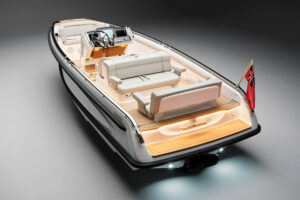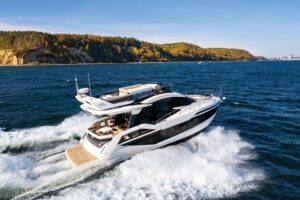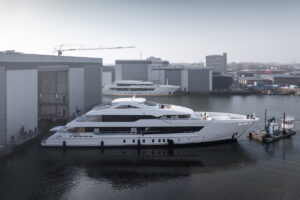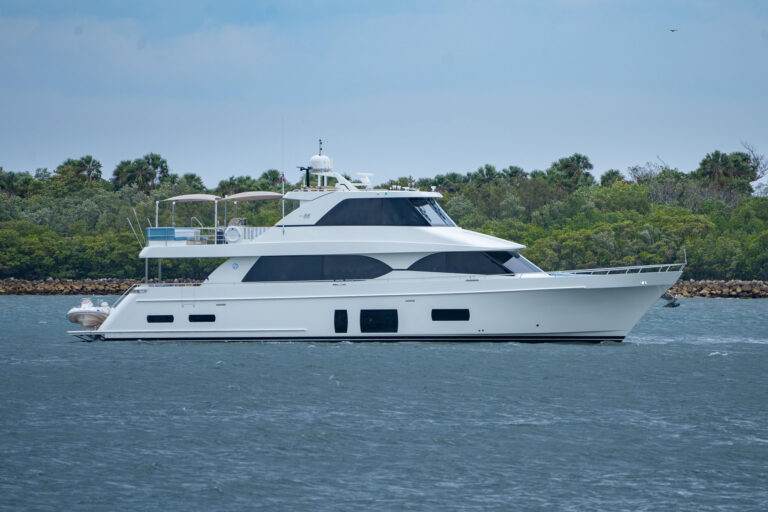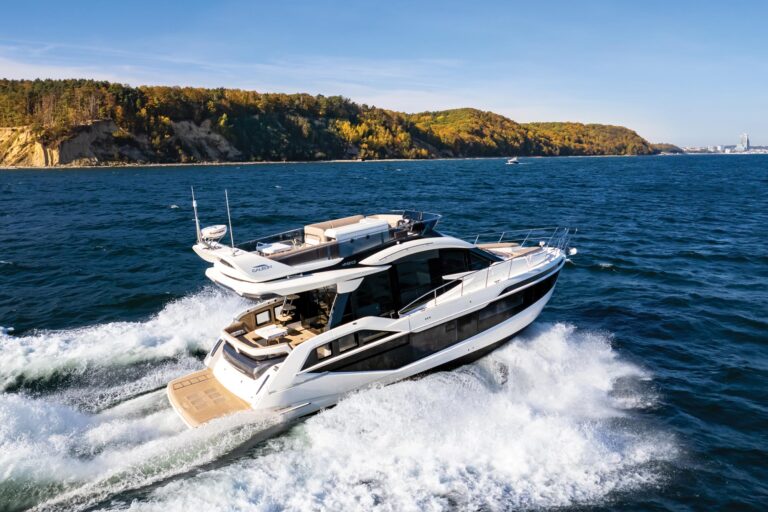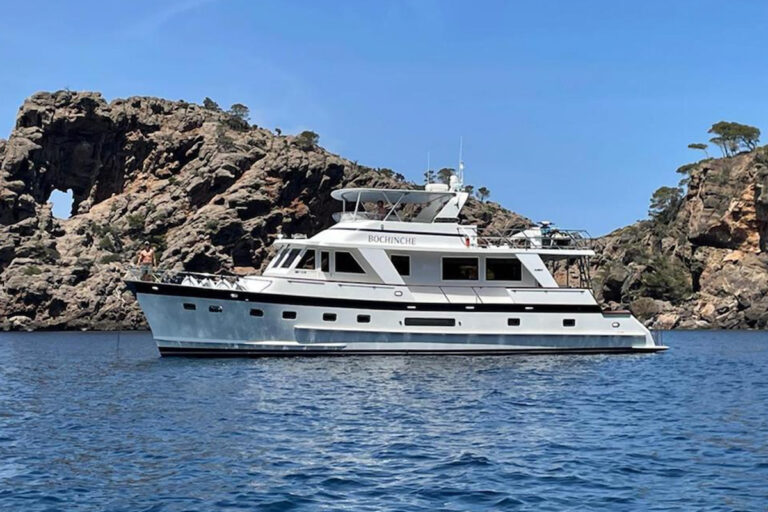
Arzana 48m Flybridge Sloop Main
At times, I can’t help thinking that overhangs get more credit than they deserve for their contribution to the aesthetics of a sailing yacht, especially the exaggerated counter and spoon bow common to the J-Class and some other yachts styled in the classic idiom. As I studied the renderings of Bill Tripp’s Arzana Navi 48m Flybridge Sloop, I realized that this yacht doesn’t need traditional overhangs to make her beautiful. Fifty years from now she will attract as many admirers as she does now — helping to redefine the term classic.
Overhangs earned their chops during the so-called “golden age” of sail early in the 20th century. A short length at the waterline, relative to the length overall, rated well, and when a yacht heeled to its optimum degree, the waterline grew long enough to increase her top speed. A sound argument for overhangs, but in that period, heavy displacement and the shape of the underbody shackled sailing yachts to a speed/length ratio of 1.34. Proponents of classic yachts argue that these designs have a seakindly motion, and I agree, but designers now know how to distribute volume below the waterline in a way that gives yachts a comfortable motion while still exceeding the age-old ratio. Tripp is very good at this.
In drawing the Arzana 48m, Tripp and his team have married the businesslike look of a racing yacht with the elegance of a modern cruising yacht. The nearly plumb stem and fine entry create the Arzana’s racy persona. A subtle springiness in the sheer line, a short counter stern and the arches anchoring the superstructure reveal her gentler side.
Research long ago proved that a circle commands more attention than any other shape. We may reasonably assume that an ellipse and half of an ellipse also will appeal to the viewer. That notion didn’t escape Volkswagen when the company designed the New Beetle for introduction to the market in 1998. Nor has it slipped from Tripp’s mind. The arches — especially the longitudinal ones — appear to support the deckhouse, but visually, their lovely curvature tricks us into ignoring the vertical front and sides of the house. Removing the arches would likely make the superstructure seem like an afterthought.
_
View interior and exterior renderings here_.

A flying bridge on a sailing yacht often looks like an excrescence, growing like a wart from the superstructure. The flying bridge aboard the Arzana blends into the lines of the house so well that it nearly disappears. Extending the roofline over the cockpit provides shelter from the sun, and at the same time, it gives the flying bridge a longer visual base and makes us ignore the abrupt terminus of the superstructure.
Tripp has created a grand illusion in this design: He’s made her appear to be smaller than she is when we see her from even a relatively short distance away and have no point of comparison nearby. Her excellent proportions are responsible. At rest in a mooring field or stern-to at the dock in company with other yachts, her tall rig and massive hull will shock us back to reality.
Nautically obsessed observers also will enjoy looking at the Arzana on the hard, cradled by her poppet stands. Her bottom transitions from a fine entry to softly elliptical sections amidships and then to flatter sections in the run. The hull grows to maximum beam just abaft the keel. Tripp has distributed the volume below the waterline in a way that reduces wave-making drag to a minimum. She won’t beat the water into submission as much as she’ll work with it to the benefit of speed and comfort. The world’s oceans will be her playground; blow high, blow low.
LOA: 158’0″
BEAM: 31’6″
DRAFT: 16’3″, 25’5″
centerboard down
SAIL AREA: 11,539 sq. ft.
DISPL.: 273.3 tons
SAIL AREA/
DISPL. RATIO: 27.32
Tripp Design, 203-838-2215; www.trippdesign.net; Arzana Navi, +377-93-50-12-12; http://y.co

